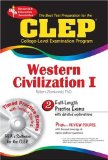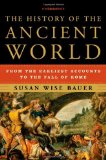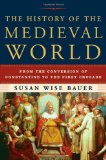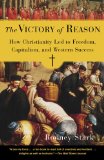Note: This post is one in a series on how we prepared our homeschooled children to take various College Level Examination Program tests. The introductory post for this series explains why we take these tests, what parts of the preparation worked for us, and what parts of the preparation did not work.
This exam, in terms of preparation, was very similar to the U.S. History exams. During the course of our homeschool we made three passes with increasingly more thorough coverage of the material. Susan Wise Bauer’s The Story of the World: History for the Classical Child: Volume 1: Ancient Times: From the Earliest Nomads to the Last Roman Emperor and The Story of the World: History for the Classical Child, Volume 2: The Middle Ages: From the Fall of Rome to the Rise of the Renaissance provided a quite good introduction. Our plan was to read her textbook, The History of the Ancient World: From the Earliest Accounts to the Fall of Rome and even The History of the Medieval World: From the Conversion of Constantine to the First Crusade
, but due to timing, we were not able to get to the former and the latter, at this writing, has not yet been released (we are on the waiting list). The bulk of her study was from CLEP Western Civilization I (REA)
. The REA books have been very, very helpful when it comes to preparing for these CLEP tests. Surprisingly, Rodney Stark’s The Victory of Reason: How Christianity Led to Freedom, Capitalism, and Western Success
, was also quite helpful in pulling some things together during the preparation. We recommend that book highly because it is so interesting, but it was nice that it helped with these tests, too.
Kelly has always made many, many note cards and a heavily annotated timeline to help her study. After she took this test yesterday, she commented that the timeline and its extensive annotations were particular helpful for this specific test. She felt like she could have done even better on the U.S. History tests if she would have done more extensive “timelining”.
Results:
Kelly took the Western Civilization I test when she was 15. According to the REA preparation book criteria, she would have gotten a grade of A in the class. She received college credit for a one semester course for her score on this test.






Ruthie
Kelly,
Could you explain more thoroughly regarding why you thought the timlining was so helpful. Was it because it helped you know the order of things, or did it help you have a visual of the overall picture or how various things around the world happened at the same time and it helped you make the connection. Does my question even make sense? Please don’t tell me that it helped you to memorize dates (but if it did, tell me, I just don’t want that to be the answer for my own hatred of memorizing specific dates :)). I know that is why some kids can’t stand history cause it is all about memorizing specific places and dates.
Mrs. Graham,
It did NOT help me memorize dates. haha! I can’t stand dates either. It did a little actually, but that wasn’t the main point of my timeline. Basically it achieved both of the goals that you stated. After the timeline was all set up with births and deaths and wars and treaties, I saw how events led to each other and I was able to really put things together. I split the timeline up into about 10 pages, but in my mind it was really split into 5 or 6 different eras. The further back I went, the longer the eras were. I would memorize the order of all the big events in one era, and that would help me remember roughly who lived when if I knew how they impacted the events at that time. I did find it helpful to memorize a the dates of few of the major events (Fall of Constantinople, beginning and end of 100 Years War, traditional founding date of Rome) so I could get a rough idea of the order of things and base other smaller events around those major events.
Of course the timeline wasn’t my whole study guide because I did need to know specific things about people, culture and religion, but I’d say it was a huge part of every aspect of my study. I wish I would have made it a little earlier in my study, but now I know! I think next time it would also be helpful to make maps of different times to know who controlled what land when…
Hope this helps!
🙂
-Kelly
Ruthie
Thank you so much for your answer. Have you heard of Amy Packs from Homeschool in the Woods? They have a great resource called History Through the Ages….a collection of Historical Timeline Figures. It has over 1,260 black and white timeline figures on 2 CDs. They have probably updated the software since I purchased ours. I haven’t put it to use like I wanted to (I envisioned having a huge timeline that would wrap around our entire frontroom and would be added to each year as we studied a particular time in history. Hasn’t happened yet, but we have used the pictures. You have inspired me to give a visual timeline another try! Put that program to good use!
Anonymous
homeschoolers are weirdies